|
Highlights of CSEE 4840 Embedded System Design
|
| Spring 2005
|
| Columbia University, Computer Engineering Program
|
| Prof. Stephen A. Edwards
|
The main focus of
CSEE 4840 Embedded System Design
is an independent
group project on the design and implementation of a small system
involving hardware and software. The students implemented the
projects on an FPGA board (the
XSB-300E) from
XESS Corporation.
This board contains a
Xilinx
Spartan IIE FPGA (an XC2S300E) capable of
holding both a 32-bit RISC microprocessor core (a ``Microblaze'') and
quite a lot of student-designed custom logic.
Virtually every project incorporated a combination of C code running
on the processor and custom logic written in the VHDL hardware
description language.
Below are selected projects from the spring 2005 course to give you an
idea of the breath and complexity of these projects. I must say, I
was very impressed with what these students could create in half a term.
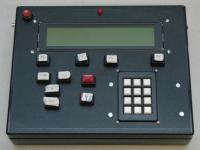
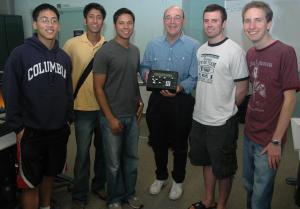 Scrabble Timer
Scrabble Timer
 Their final report
Their final report
Nathan Hale
Gaurav Singal
Andrew DiMichele
Vishal Govil
Hubert Lin
This group built a timer for Scrabble games. We were approached
by Murray Eskenazi (third from right), a local inventor responsible for
the development of
Super Scrabble, to build a prototype for a game timer that he wanted to
pitch to Hasbro. After discussion, this group took his design, built a
hardware platform (based on a PIC microcontroller and an LCD display), and
coded the game in C.
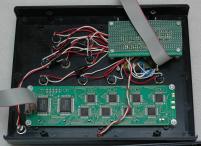
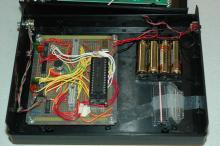
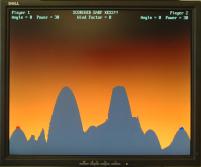
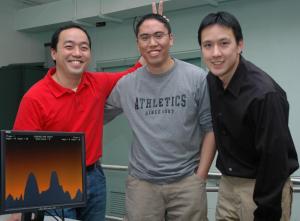 Scorched Earf XESS
Scorched Earf XESS
 Their final report
Their final report
Michael Sumulong
Jeremy Chou
Dennis Chua
This group recreated the 1990s DOS game Scorched Earth on the XESS
board. They built custom graphics hardware that handled three
sprites, text for the score and other information, a gradient background
generator, and a terrain generator, all of which led to very small memory
requirements. They programmed the game logic in C and made quite a sensation
on demo day--every other group wanted to play their game!
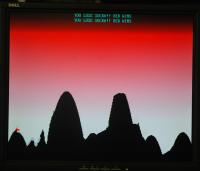
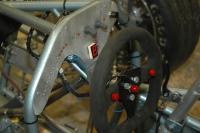
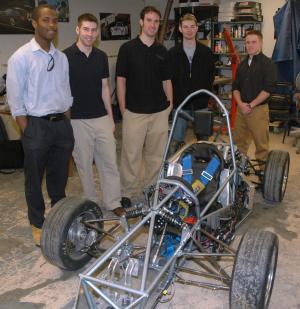 SAE Auto Shifter
SAE Auto Shifter
 Their final report
Their final report
Ron Alleyne
Wade Brzozowski
Joseph Carey
This group worked in conjunction with a pair of mechanical engineers taking
Prof. Anouck Girard's MECE E3410 Engineering Design class to produce the
digital component of a dashboard and shifter for the SAE racing car being
developed in the basement of the Mudd building. Easily winning the ``most
exotic peripheral'' contest with a 45A solenoid driving a shift pedal on a
four cylinder Suzuki motorcycle engine, this group had to deal with the
challenges of the all-too-real world of embedded systems:
gasoline fumes and an engine that would not start.
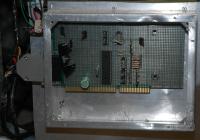
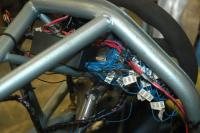
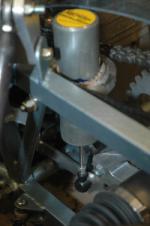
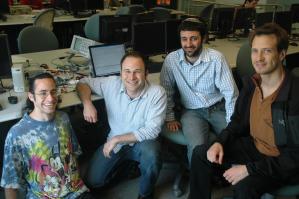 Internet Radio Broadcaster
Internet Radio Broadcaster
 Their final report
Their final report
Avi Shinnar
Benjamin Dweck
Oliver Irwin
Sean White
These four spent a whole term building a very expensive wire: an Internet radio
broadcaster. This took line-level audio in through a codec, encoded it,
and transmitted it over Ethernet as RTP (real-time transport protocol), which
is a simple protocol on top of UDP (user datagram protocol), which is
in turn on top of Ethernet. The final result: they could hook up an iPod and
the campus network to their board and listen to it with mplayer anywhere on
the planet. Their project and report are very carefully written.
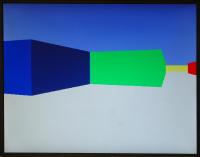
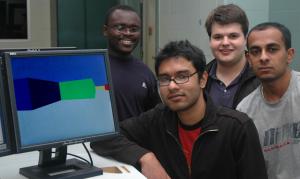 MAYD: A 3D Maze Game
MAYD: A 3D Maze Game
 Their final report
Their final report
Surag Mungekar
Vladislav Adzic
George Yeboah
Nabeel Daulah
These four built custom graphics hardware for displaying a first-person
view of a 3D maze. The hardware is deceptively simple: each column contains
three colors: the sky, a wall, and the ground. The software, written in C,
uses raycasting to quickly calculate where these colors start and stop
in each column. The result is a high frame rate and a strong sense of being
in a 3D environment. I got dizzy running around in their maze!
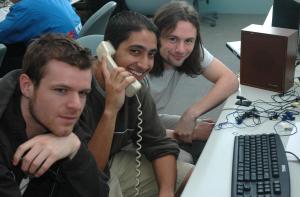 Voice-over-IP SIP Telephone
Voice-over-IP SIP Telephone
 Their final report
Their final report
Rajkumar Bakhru
Colin Gilboy
Sam Jenning
These three ``phonies'' used the board to build an Internet telephone.
They used the audio codec's ability to do full-duplex audio (input and output),
and wrote C code to speak SIP (session initiation procotol) over Ethernet.
For their final demo, they snaked a telephone wire from the Gateway lab through
the hallway to the embedded systems lab and called themselves. Embedded
systems, phone home!

 Scrabble Timer
Scrabble Timer



 Scorched Earf XESS
Scorched Earf XESS


 SAE Auto Shifter
SAE Auto Shifter



 Internet Radio Broadcaster
Internet Radio Broadcaster

 MAYD: A 3D Maze Game
MAYD: A 3D Maze Game
 Voice-over-IP SIP Telephone
Voice-over-IP SIP Telephone